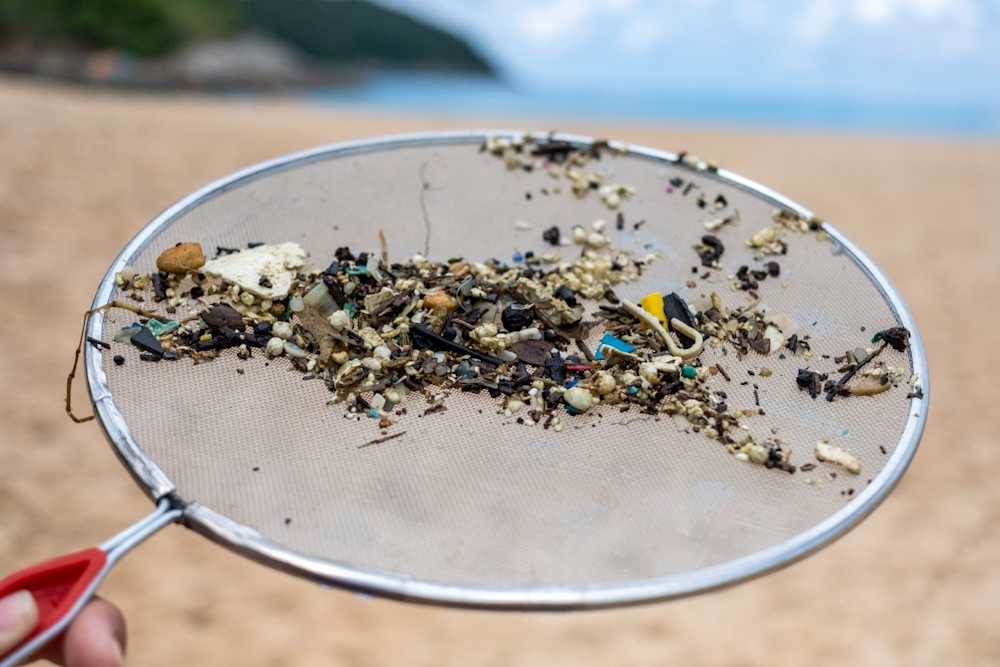The International Standardization Organisation published one of the first internationally recognized microplastic testing standards, ISO 24187, in September 2023. Titled “Principles for the analysis of microplastics present in the environment”, the standard is set to advance harmonization in the emerging field of microplastic analysis.
Rather than proposing a single approach to testing, ISO 24187 lists several analytical methods and provides general guidelines for sampling, sample preparation, and data processing. In addition to environmental matrices, its principles can be applied to other sample types, such as drinking water and food.
Microplastic definition in ISO 24187
The new standard defines microplastics as solid plastic particles that are insoluble in water and have at least one dimension between 1 μm and 1,000 μm. In addition, it defines “large microplastics” as solid, insoluble plastic particles with any dimension between 1 mm and 5 mm.
This distinction between microplastics and “large microplastics” is not standard practice in the field. EU and US chemical and environmental agencies, for example, define microplastics in general as plastic particles with dimensions smaller than 5 mm.1
Categorization of particles into size ranges
ISO 24187 includes a table that classifies microplastic particles into seven size ranges, specifying the average particle size, mass, and number of particles per 14.13 mg for each class. The classification is aimed at enabling more meaningful impact assessments, accounting for the differences between having a sample with a large number of small particles vs. one with a few large ones, showing up as a larger quantity in terms of mass.
Table 1: Particle size classification in ISO 241872
Particle size range (μm) | Average particle size (μm) | Mass of average-sized spherical particle with a density of 1 (mg) | Number of particles per 14.13 mg |
1 to < 5 | 3 | 1.4 × 10E−8 | 1.0 × 10E9 |
5 to < 10 | 7.5 | 2.2 × 10E−7 | 6.4 × 10E7 |
10 to < 50 | 30 | 1.4 × 10E−5 | 1.0 × 10E6 |
50 to < 100 | 75 | 2.2 × 10E−4 | 6.4 × 10E4 |
100 to < 500 | 300 | 0.014 | 1,000 |
500 to < 1,000 | 750 | 0.22 | 64 |
1,000 to 5,000* | 3,000 | 14 | 1 |
* Particles in this size range are classified as “large microplastics”.
Method selection for microplastics analysis
ISO 24187 emphasizes the need to choose the most appropriate microplastic testing method depending on the goal of the analysis. Examples of typical goals include determining the following properties:
Polymer types present in the sample
Particle number as a total and by size range and/or polymer type
Mass fraction of microplastic in relation to sample quantity
Further qualitative information, such as particle shape, morphology, and presence of additives
The standard specifies several analytical techniques for detecting microplastics. Selected techniques and the types of information they can be used to obtain are listed in Table 2.
Table 2: Overview of selected microplastic analysis methods specified in ISO 24187
Method | Obtained information | Smallest detectable particle size | Advantages | Disadvantages |
Number of particles per size range and polymer type | ~ 1 μm | + Detects a wide variety of plastics + No interference from water | - No direct quantification - Fluorescence from inorganic materials | |
Pyrolysis-gas chromatography-mass spectrometry (py-GC/MS) | Mass fraction by polymer type | ~ 0.4 μm** | + Direct quantification | - No particle size information - Limited capability to detect different polymers |
Fourier transform infrared spectroscopy (FTIR)* | Number of particles by size range and polymer type | ~ 5 to 10 μm | + Detects a wide variety of plastics + No fluorescence from inorganic materials | - No direct quantification - Interference from water |
* The standard also mentions ATR-FTIR and FPA-FTIR as possible FTIR setups
** The method does not directly detect individual particles, but filtering can be used to measure the total mass of plastic particles belonging to certain size ranges. In theory, there is no lower limit for particle size, but in practice, filters with a minimum pore size of 0.4 µm are used during sample preparation.
The techniques outlined above are the ones most typically available through commercial microplastic laboratories. ISO 24187 does, however, also mention several additional techniques, including DSC, NIR, QCL-IR, TED-GC-MS, and visual sorting with microscopy.
Sampling and sample preparation
ISO 24187 outlines several key principles to follow in microplastic sampling and sample preparation. These include:
Having a large enough sample volume to examine a sufficient mass and/or number of particles. The smaller the expected number of particles, the larger the volume needed.
Using appropriate filtration processes and preferably filtering particles according to the size ranges given in Table 1. All filter materials should be plastic-free.
Choosing sample preparation (e.g. drying, milling, and grinding) procedures that do not affect the plastics in the sample. For example, if drying is performed, the temperature should generally not exceed 40 °C.
Existing environmental sampling standards, such as the ISO 5667 series for water, sediment, and sludge, the ISO 23611 series for soil, and the ISO 16000 series for air, can be used as a basis for sampling but should be modified for microplastic analysis, where necessary.
Microplastic testing by the ISO 24187 standard
Measurlabs offers a range of microplastic testing services with methods outlined in the ISO 24187 standard, including Raman, FTIR, and py-GC/MS. In addition to environmental samples, we can analyze consumer products, food, biological samples such as blood, and other specialty matrices. Relevant legal requirements, such as the recent REACH restriction on microplastics, can be taken into account when formulating the testing plan.
You can contact our experts through the form below to request a quote. Please describe your samples and the goal of the analysis project in detail to help us prepare an offer as swiftly as possible.

